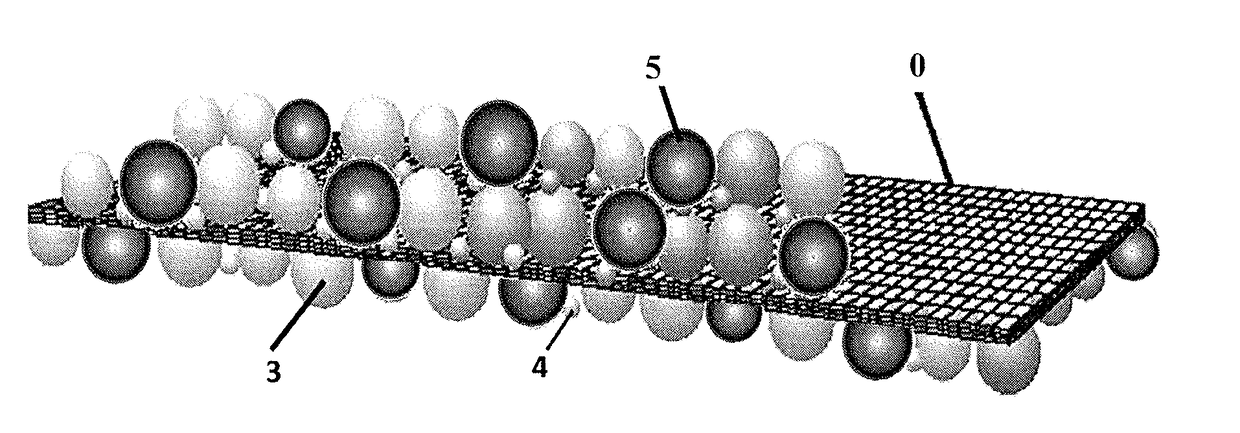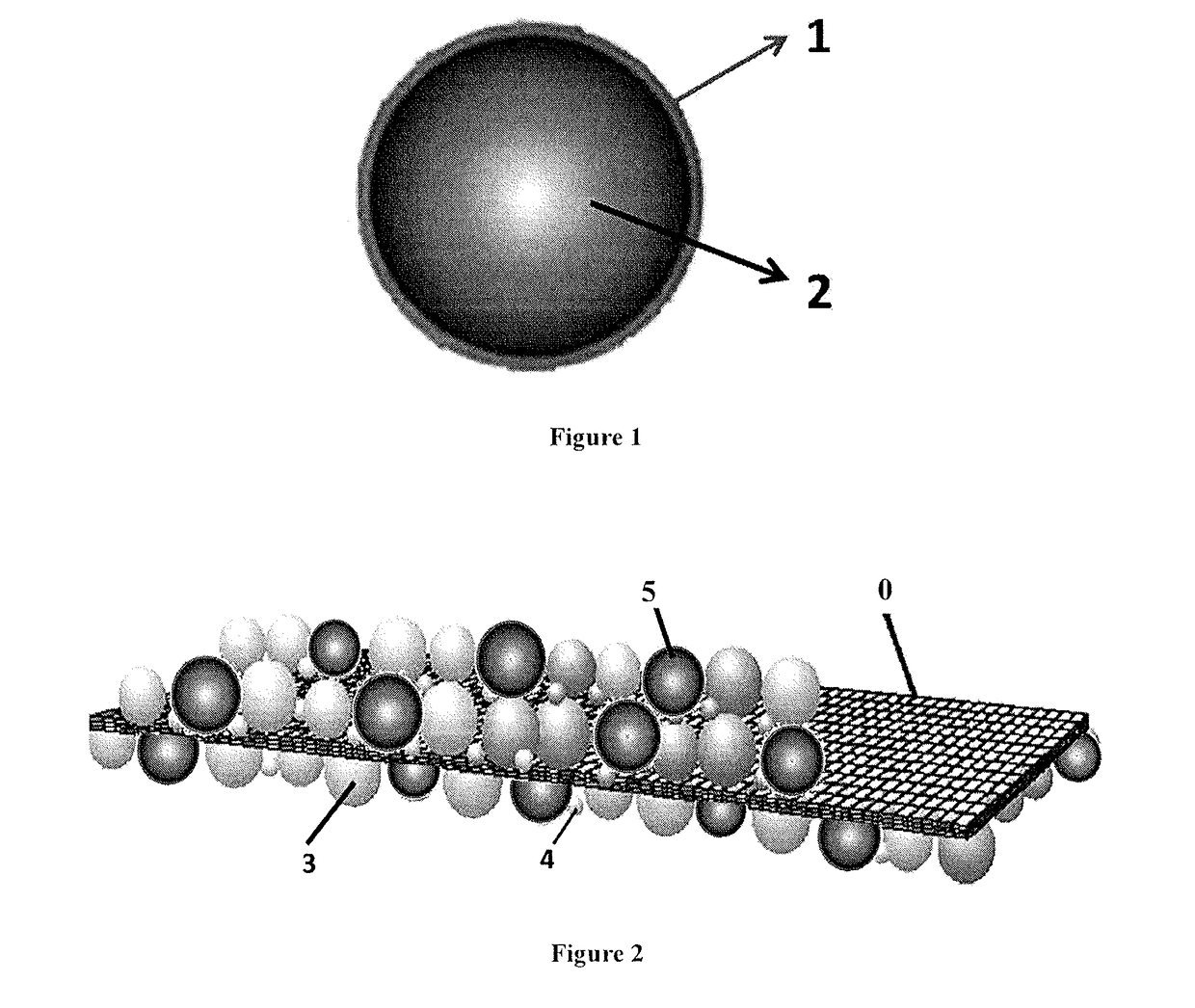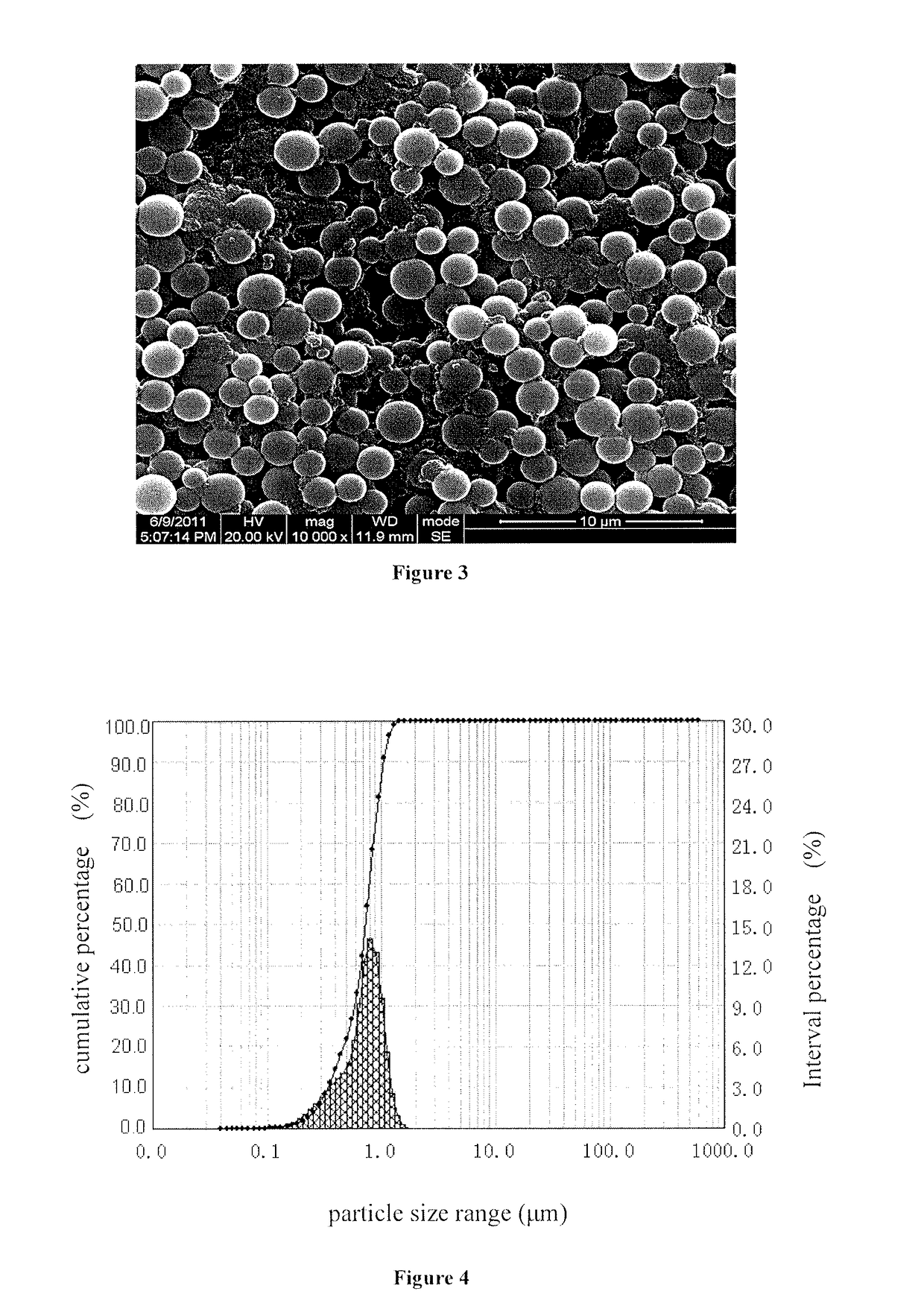The strength of the traditional
lithium battery is significantly weakened as the thickness is reduced.
In particular, due to the poor
hardness and ease of
distortion of the large-size battery, its application in devices may be affected, and even the performance and safety of the battery may also be seriously affected.
The reason why the strength of the battery is poor is that the positive
electrode, the diaphragm and the negative
electrode of the traditional battery are combined sequentially in a stack, and the
electrode is injected.
Due to the sliding between the relative positions of the positive electrode and the diaphragm and between the diaphragm and the negative electrode under the action of the
smooth surface of the diaphragm and the
lubrication of the added
electrolyte, and due to the fact that the positive electrode piece and the negative electrode piece are sheets which consist of
metal foil and inorganic
powder that are 100 micrometers in thickness and poor in strength, the strength of the formed battery can only be supported by the physical superposition of the 100
micrometer electrode pieces, and
relative displacement exists between
layers, resulting in non-conformity with the battery strength application requirements of various devices during the actual application process.
Additionally,
distortion of the battery may be caused by the increased area of the battery, and thereby affect the safety of the battery and even cause the battery to burn or explode.
1. The traditional
polyolefin diaphragm is replaced by using the
polyvinylidene fluoride (PVDF)
polymer or the PVDF
polymer is coated on the surface of the polyolefin diaphragm, and the gel
electrolyte is produced under the action of the PVDF polymer and the
electrolyte solution; the strength of the battery is improved by the
permeation of gel in electrode micropores. For example, in the patent CN1259773A disclosed on Jul. 12, 2000, PVDF-hexalluoropropylene (HFP)+
propene polymer (PP) /
poly ethylene (PE), etc. are used as gel
polymer electrolytes to improve cohesive force between electrode slices; compared with the liquid electrolyte solution, the gel
polymer electrolytes are obviously reduced in performance of
conductivity, etc., resulting in affecting the
magnification, low temperature and cycle performance of the battery. More important, PVDF may react with LixC6, the
enthalpy change of the reaction is increased linearly with the increase of x value and the specific surface area of the carbon material, and Maleki, etc. indicated that the reaction of LixC6 and PVDF starts at temperature of 210° C., is up to the maximum exothermic peak at temperature of 287 DEG C, with the heat release of 317 j / g. Therefore, the safety of the PVDF series gel
polymer electrolytes in application is limited. In addition, a process for manufacturing the battery by using the technology is complex, and even if the currently-optimized technology is adopted, the battery is also clamped by using large-
pressure work fixtures for more than 4 hours in the battery formation process to achieve formation, resulting in occupation of a large number of work fixtures,
high energy consumption and high cost.
2. The battery components are bonded by introducing
adhesive into the battery to improve the strength of the battery. For example, CN102653656 A discloses a method for improving the anti-
wrinkle property of ultrathin batteries, in the method,
solvent resin is prepared by taking
alcohol or
ketone as solvents under high-speed stirring at normal temperature, then add defoaming agent and leveling agent uniformly sprayed between the ultrathin
battery electrode slices and the aluminum plastic membrane by using the spray gun. This method able to improve
hardness under
drying at normal temperature or high temperature. Through this method, although the strength of the
lithium battery can be improved, due to the introduction of the
alcohol or
ketone resin
solvent in the battery, the compaction density of the electrode slices is changed, and the injected glue may block ion transmission between the electrode slices and the diaphragm to affect the performance of the battery greatly. And due to the complex process that can not meet the requirement of high volume production. In addition, the patent WO2009 / 096671 discloses a diaphragm for improving bonding force with the electrodes and an electrochemical device with the diaphragm, a
porous coating which is formed on at least one surface of the porous matrix and is prepared by a mixture of a plurality of
inorganic particles and an adhesive polymer and a dot
coating which is formed on the surface of the
porous coating and is provided with a plurality of dots which are prepared from the polymer and are arranged at preset intervals are utilized. In the patent, dot
coating is performed on the
coating, and the interface of the entire battery is enhanced under the adhesion of rubber polymers of the dot coating and the electrode slices; and in this method, although the interface of the battery is improved, and the integral strength of the battery is enhanced, due to the secondary coating on the
porous coating, the process is also complex, and the yield is difficult to control, so this method cannot be used for industrialization. In addition, the rubber compounds have the obvious problems such as swelling, etc. in the lithium battery, resulting in affecting the performance of the battery.
3. Introducing the substances which can adsorb the electrolyte solution into the battery, through reducing the volume of free liquid and improving the force of friction, the strength of the battery is improved. In the disclosed
Chinese patent CN 102306725 A, a copolymer of
acrylate and
acrylonitrile is used as an isolating membrane, the isolating membrane has
high absorption capacity on the electrolyte solution, reduces the free electrolyte solution which is not adsorbed by the electrodes and enhances the force of friction between the diaphragm and the electrodes to improve the strength of the battery. In the method, the free electrolyte solution is adsorbed by utilizing the diaphragm to improve the strength of the battery to a certain extent, however, the improvement of the adsorbed free electrolyte solution on the strength of the battery is limited due to small force of friction between the diaphragm and the electrode slices, and due to increase in the volume of the electrolyte solution adsorbed by the diaphragm, the production cost is increased, and the potential
safety risk is also increased; In addition, the allowable thickness error of the diaphragm will bring big difficulty to the control of the solution
injection volume of the battery, and the batch control to the uniformity of the battery cannot be achieved.
4. Improvement of battery production process and the strength of the battery.
Chinese patent CN 102593520 A discloses a method for improving the strength of the
lithium ion battery through quick formation, in the method, the aim of reducing the polarization of the
battery cell is fulfilled by regulating the prebaking time, prebaking temperature and formation temperature of the battery
cell and the pressure to which the battery
cell main body is subjected to realize heave-current and quick formation. Finally the lithium ion battery with high strength is prepared by regulating the stopping potential of formation. Compared with the prior art, in the method, due to the
elimination of baking by clamping at high temperature for shaping after formation, the capacity of the prepared battery
cell is higher; the battery cell is subjected to constant (variable) pressure in the discharging process, so that polarization during charging and discharging is smaller, and the uniformity of the capacity of the prepared battery cell is better; formation is performed at different temperatures in different SOC
cut-off
modes, thus, the prepared battery cell have high performance and high strength; Although the strength of the battery can be improved in this method, because the technical links related to the method are more, and the time of the process is increased when the formation
system is improved, time occupied by equipment is prolonged, equipment which is high in cost proportion and is used for formation is required to be increased, and large industrialized application is difficult to implement.
 Login to View More
Login to View More 


